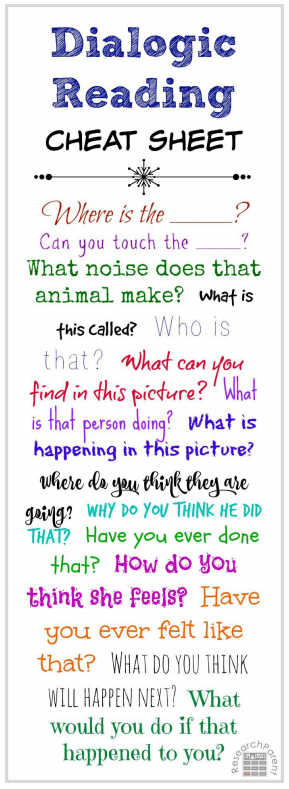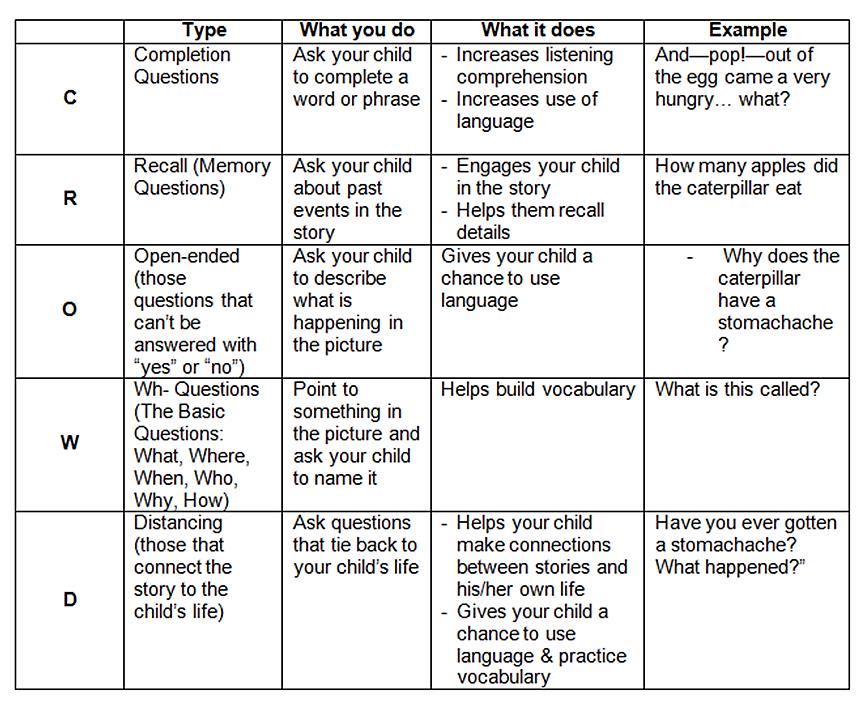Dialogic Reading
|
Simply put, dialogic reading is taking turns in a conversation about a book, or reading and talking about it. Talking about books is important for small children. Researchers have learned that when children are regularly engaged in repeating, correcting, and expanding their use of language around a book, they improve their language and literacy skills. Because having a conversation about a book often naturally begins with questions, asking and responding to questions forms the basis of dialogic reading.
|
C.R.O.W.D.
Using C.R.O.W.D is a useful technique during dialogical reading:
C- completion prompts
Learners are asked to fill in the blank at the end of a sentence e.g. The first little pig made a house of …….
R- Recall prompts
Children are asked to say in their own words what happened so far in a text. This will help learners understand texts or remember events. e.g. What happened to the second little pig?
O- Open ended prompts
The aim is for learners to notice details and check comprehension e.g. Who can you see in the picture? How does the pig feel in this part of the story?
W- wh prompts
These prompts are usually questions what begin with who, what, when, where, why. Children are asked for a specific response e.g. who is this? (Point to a picture) .
D- Distancing prompts
Children are asked questions that help them reflect on their own experience based on the input from a text. They help children make connections between a text and the real world. E.g. What is your house made of? When were you scared?
C- completion prompts
Learners are asked to fill in the blank at the end of a sentence e.g. The first little pig made a house of …….
R- Recall prompts
Children are asked to say in their own words what happened so far in a text. This will help learners understand texts or remember events. e.g. What happened to the second little pig?
O- Open ended prompts
The aim is for learners to notice details and check comprehension e.g. Who can you see in the picture? How does the pig feel in this part of the story?
W- wh prompts
These prompts are usually questions what begin with who, what, when, where, why. Children are asked for a specific response e.g. who is this? (Point to a picture) .
D- Distancing prompts
Children are asked questions that help them reflect on their own experience based on the input from a text. They help children make connections between a text and the real world. E.g. What is your house made of? When were you scared?

